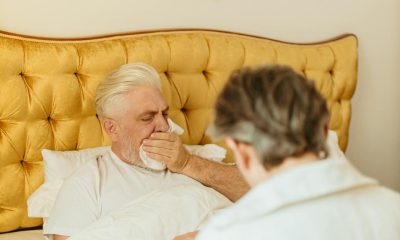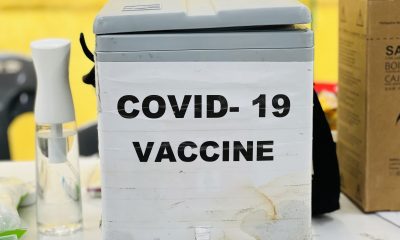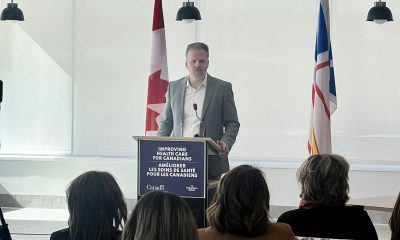Health
Athletic groups need to address all issues surrounding concussions

LUBIN, POLAND—JUNE 5, 2014: Michal Bierzalo (L) and Kamil Maternik (R) injured during match 1/4 final Polish Junior Championships betwen KGHM Zaglebie Lubin – Wisla Krakow(0:2). Photo by Dziurek / Shutterstock.com.
TORONTO—A coalition of health and sporting groups across the country is calling for Canada’s athletic organizations to get more proactive about protecting participants from head injuries.
The Canadian Concussion Collaborative, consisting of nine national sports advocacy groups, has laid out two specific recommendations in the September issue of the British Journal of Sports Medicine.
The collaborative says most sports organizations don’t have policies in place that address the needs of a concussion patient at every step of the process.
The group’s first recommendation is to put such policies in place immediately and to review them once a year.
The collaborative says the protocols should address concussion education, prevention and treatment, as well as an athlete’s return to action.
They say most sporting groups have policies in place to tackle some of these aspects, but don’t address the issue as a whole.
The collaborative also recommends that organizations consult with medical professionals and local community resources when developing their concussion protocols.
The recommendations come at a time when awareness of concussion risks and repercussions are at an all-time high, according to collaborative members such as the Canadian Centre for Ethics in Sport.
Urging athletic organizations to act on their newly accumulated knowledge and translate it into concrete policies, they said, is a natural and necessary next step.
CCES CEO Doug MacQuarrie said many parts of society are equipped to deal with the various aspects of concussion management.
He said the time has come for sporting associations, school boards and other organizers of athletic activities to bring all concussion management tools under one roof.
“Often times these things are left to discrete parts of the system,” MacQuarrie said in a telephone interview from Ottawa.
“A sport organization may deal with, ‘what do we do on the field?’ A public health agency or local health care unit may deal with, ‘what do we do when they’re in the hospital,’ and the family practice might say, ‘OK, how do we get the person back into sport?’ What’s optimal is that all of those links are contemplated in advance so that people who get involved in sport how that system exists in their community to assist them should the unfortunate circumstance of a concussion arise.”
MacQuarrie said an ideal concussion protocol would address four key points – training coaches, parents and participants to watch for signs of head injuries, setting up guidelines to make the environment safe for athletes, establishing a treatment protocol should a concussion take place and developing a process to help injured players get back in the game slowly and safely.
This policy should be reviewed once a year to make sure information and resources are kept up to date, he added.
All of these guidelines should be developed with the input of professionals with specific expertise in concussion management, as well as community resources that can ensure the program is tailored for local needs, he said.
The Saskatchewan Soccer Association leaned heavily on local experts when developing their concussion protocol last year.
Executive Director Doug Pederson said the province’s Sports Medicine Science Council offered advice on every facet of the new policy, including providing educational links for parents to access and urging injured players not to lace up their cleats until they had hashed out a “return to play” plan with a doctor.
Pederson said their guidance was essential, since association members themselves don’t have the subject matter knowledge to make the policy as sound as it could be.
“We had good advice and good help to build our policy,” he said. “Obviously a lot of the expertise is not our own and came from those sorts of conversations.”
The collaborative emphasizes the many advantages a comprehensive concussion protocol would have on athletes, but parents and coaches say they also stand to benefit.
Calgary firefighter and minor hockey coach Jodi Bednarek said the volunteers who offer to lead amateur sporting activities are usually not equipped to diagnose or treat head injuries when they take place.
Concussions are not always the result of bruising brawls or body blows, he said, adding the more subtle forms of injury run the risk of falling through the systemic cracks.
Guidelines prepared by sporting associations and approved by medical experts, he said, would give coaches more effective tools to prevent lasting damage while easing the pressure they face in their volunteer roles.
“The problem that a lot of the coaches face is that they don’t have a protocol to say, ‘OK, based on that mechanism of injury, you need to now take a seat if you’ve got a headache or not. We need to take a look at you before you can continue in the game,”‘ he said. “It really takes the onus off of the coach and onto the organization to develop a profile of what to follow.”
The protocols could also reassure parents who are either anxious about a potential injury or curious as to why their children are sitting on the sidelines, Bednarek added.
The collaborative said it hopes its recommendations will be broadly adopted across the country, adding their advice is aimed at everyone from government agencies to schools that run athletic programs.





















